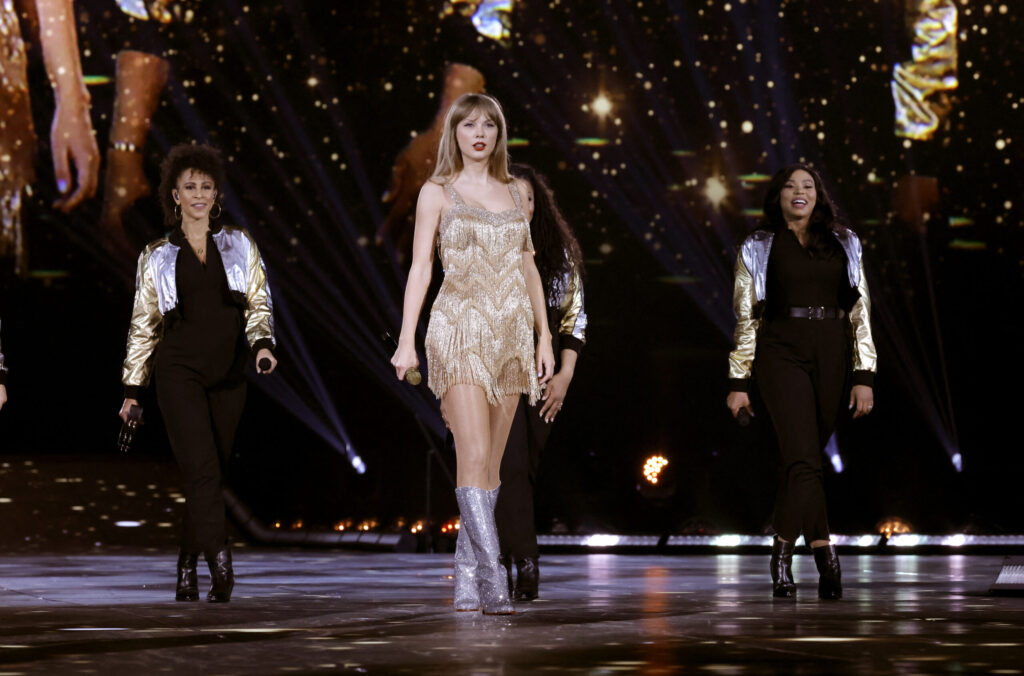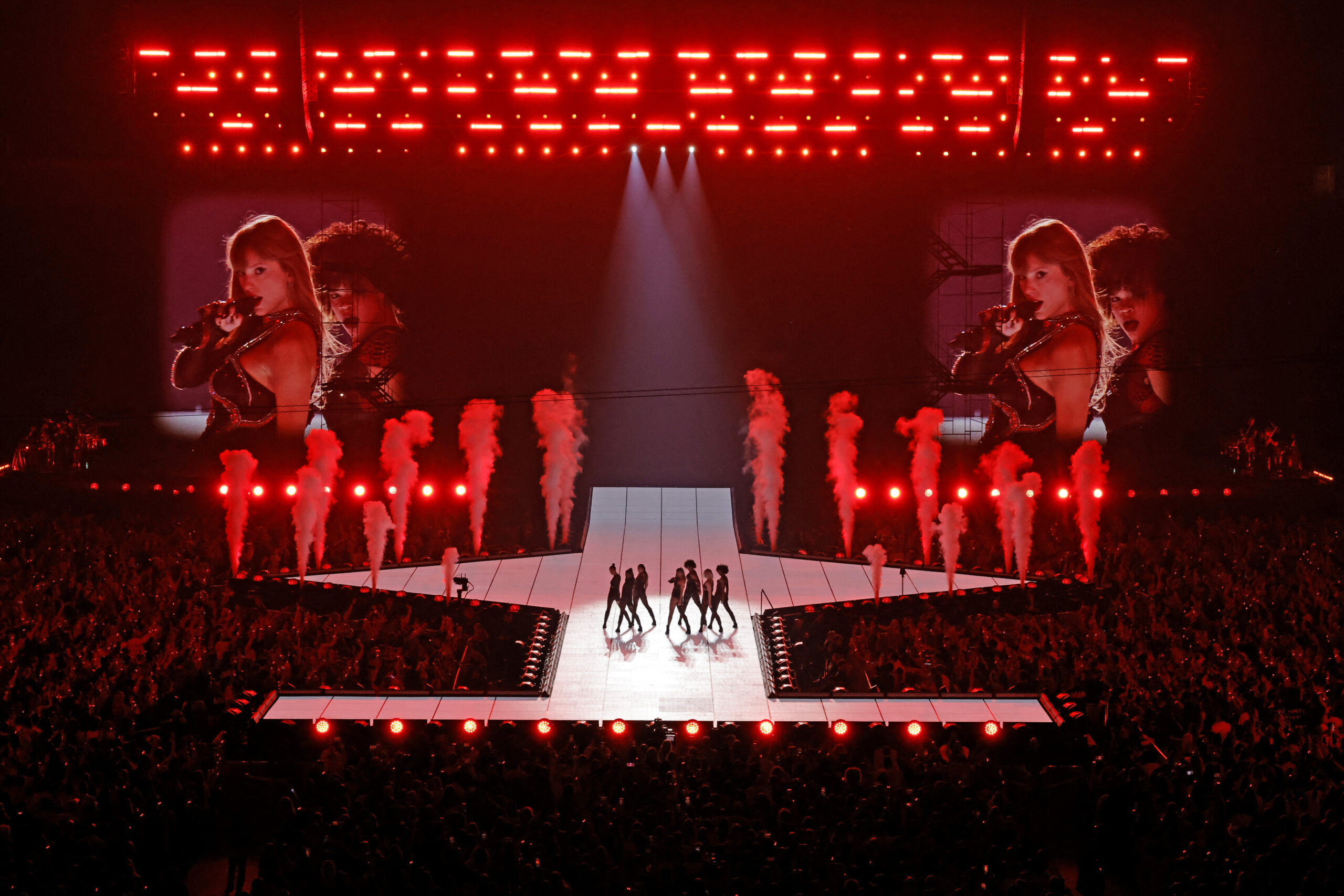That Taylor Swift is a great songwriter is no longer in question. What’s up for debate is whether she’s a great concert artist as well.
By artist we don’t mean a gifted vocalist. The era of the pop concert as a singing showcase and a straightforward live onstage performance of recorded music ended in 1990 with Madonna’s third concert tour. Called Blond Ambition, the highly theatrical show combined music, spectacle and, most crucially, storytelling with a several-act structure based on themes or narrative arcs, deconstructed songs and elaborate sets to redefine the pop concert as performance art. It has since been the template and gold standard by which all concerts, especially those by female superstars, have been measured.
Yes, even Madonna’s own subsequent tours have been assessed through the Ambition lens and, arguably, none of them has quite equaled the one that gave the world the cone bra as an icon of female sexuality and woman power.

Feast for the eyes
Swift’s The Eras Tour, as seen in the filmed concert currently showing in cinemas worldwide, certainly serves up a feast for the eyes. Most of it is courtesy of the massive stage consisting of a backdrop that stands several stories high, a huge main platform and a long runway that juts well into the audience floor and features its own diamond-shaped mini-stage with a “hyperactive” central hydraulic platform consisting of several mobile blocks that rise to various heights throughout the almost three-hour show.
It’s not only one of the biggest stages ever built for a pop concert, but is also probably the biggest LED installation ever assembled in and outside the music world. And it’s never not in use, lighting up the cavernous 70,000-seat SoFi Stadium in Los Angeles (where the movie was filmed over three shows) with eye-popping digital images, pre-recorded videos and live footage from the concert itself.
The set is so massive that it makes Swift and her troupe of dancers look like ants. But thanks to the big screens, she literally looks larger than life to the live audience at different points in the show.
The film does the opposite, and is the better for it: It brings Swift into the intimate space of the cinema and, thus, closer to the audience. Eras further highlights and celebrates the main thing that has helped the 33-year-old singer-songwriter conquer the pop world, the core attribute that makes Taylor Swift Taylor Swift: relatability.
It’s all over her music: a repertoire of mostly slow and mid-tempo ballads that tell about the blush, excitement, joy, ecstasy, frustrations, confusion, sadness, heartbreak, anger and regrets of modern-day romantic relationships, in creative confessional journal prose that listeners of all ages, colors and persuasions find no difficulty accessing and plugging into.
It’s all over her wholesome, winsome, non-threatening all-American girl-next-door public persona. This is on fuller display in her performance in Eras than even in her 2020 documentary movie, Miss Americana & The Heartbreak Prince, which chronicled mostly the period between her Reputation Tour in 2018 and the release in 2019 of her seventh studio album, Lover.
Between the many floral, even pastoral, and fluid graphic images onscreen and the tasteful, immaculate set pieces, between the squarely schematic album-era sectioning and the billowy ball gowns and sparkly and sexy but modest bodysuits, between the Cheshire-Cat grin Swift wears through most of the show, even during moments in some heartbreak songs, and her dorky cheerleader energy, The Eras Tour plays like Little Miss Sunshine & The Hearty Princess. It’s all what anyone would expect from the reigning America’s Sweetheart.
Thoroughly entertaining
It’s a great Taylor Swift show, for sure — thoroughly entertaining and one that sends stans to Swift heaven. But it stops at being a Taylor Swift show with a faithful rendition of her songs when, for something called Eras, it should be giving audiences, both fans and casuals alike, more to chew on than what they already know and are familiar with — a recast, a reinterpretation, a recontextualization of her music and impact.

The show is content to be a pop concert about Taylor Swift. Coming almost 20 years into her career, it should’ve reached for the world outside of Taylor Swift, or even just a small part of it: What do Taylor and her songs, for instance, say about the times we are living in?
The Eras Tour could have aspired to life and art, or at least something approaching it, and thereby become a truly era-defining experience.


